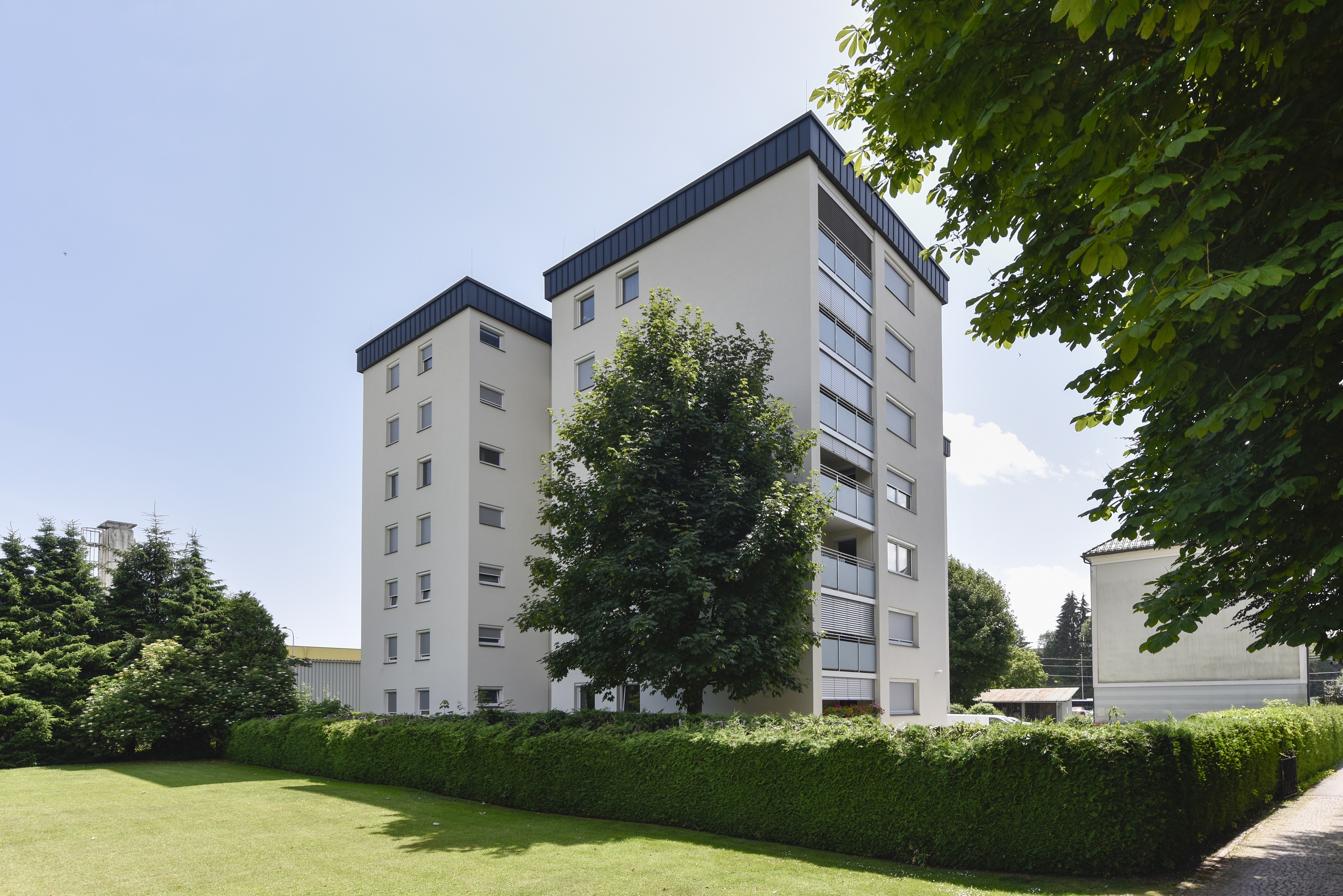Sustainable existing housing
We make our flats climate-friendly. This benefits the environment and our tenants.
Most of our CO2 emissions are attributed to existing housing. The heating energy requirements of older residential complexes are higher than those of our modern new buildings. Making the apartments climate friendly requires extensive thermal rehabilitation and switching to an environmentally compatible heating system.
Proper insulation and window replacements are an important way to minimise energy consumption for heating, hot water production and ventilation. This benefits the environment as well as our tenants, who regularly have lower energy costs and whose residential environment is improved as well as healthy. Sustainable household energy consumption always presupposes the efficient use of energy in everyday life, however.
BUWOG residential complex in Feldkirchen
BUWOG residential complex
Ghega Allee 3
9560 Feldkirchen, Carinthia
Refurbishment 202
The BUWOG building on Ghega Allee in Feldkirchen (Carinthia) is an excellent example of thermal rehabilitation. The rehabilitation of the residential building included insulation of the basement ceiling, the outer façade (mineral wool in each case) and the ceiling of the top floor as well as replacing the windows and installing a sun protection system (roller shutters with heat-insulated lightweight metal awnings).
Result: the heating requirement was reduced by more than two thirds from 91.7 kWh/m²a to 28.7 kWh/m²a.
Renovated residential house with green area
BUWOG residential complex
Rangentinerstraße 12-13
9560 Feldkirchen, Carinthia
Refurbishment 2020
Another example of our ongoing rehabilitations: the BUWOG apartment building in Rangentinerstraße in Feldkirchen (Carinthia). In addition to insulating the façade and basement ceiling, the flat rooftop was refurbished in the form of a raised roof truss and the top floor ceiling was insulated underneath.
The result: the heating requirement was nearly halved from 46 kWh/m² annually to 26 kWh/m². The energy demand declined from 102 kWh/m² annually to 70 kWh/m².

